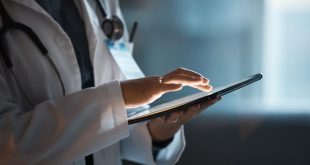Virus and germ masks help
Fearing the coronavirus, many people try to protect themselves by wearing a mask. In many Chinese cities, it is already mandatory to wear it. What is the true benefit of using them?
he simple mouth and nose protector, the classic mask that fits behind the ears or the head, used to be used time ago almost exclusively in operating rooms. Both doctors and assistants often use it primarily to prevent their patients from being infected with pathogens during an operation.
Of course, the mask only works if it is changed regularly and disposed of safely and hygienically. This must be changed at least every two hours in the operating area because it quickly loses its function.
How much protection does it offer?
The mask wearer can protect himself from germs and infections but in a very limited way. Although the virus usually enters the body through the mouth or eyes (if there are no open wounds), the hands play the most important role.
In that sense, surgical masks and goggles are not as effective in blocking the virus. Rather, they serve as a constant reminder to avoid putting your hands to your nose when itching or when you want to scrub your eyes.
Filter masks offer better protection
In addition to surgical masks, which look more like disposable cloths, there are also filter masks. These are most used by artisans, especially for protection against harmful dusts and sprays. They are available either as disposable masks or as plastic masks to which a filter can be inserted.
In the European Union, masks are divided into three types of FFP (face filter) protection. FFP1 level masks are better than conventional masks, but do not provide the desired protection against viruses. Meanwhile, FFP-3 class masks protect against viruses, bacteria, fungi and spores, among other things, but not from highly dangerous dusts such as asbestos fibers.
How to wear a mask correctly
Unlike simple masks, some high-quality filter masks can protect the user from infection due to their design. They are even able to help prevent highly infectious pathogens such as measles or tuberculosis. However, protection only works if additional preventive measures are taken, for example, taking care of hygiene when putting on the mask, wearing protective glasses, gloves, and plastic apron, properly disposing of disposable items that may contaminate and washing hands regularly. In addition, the environment should always be disinfected systematically.
These masks are used by various medical teams in quarantine stations where patients who have already been diagnosed with an infection are treated. However, for public transport or for work, its use would be completely excessive.

Does it work against tear gas?
Protesters in Hong Kong also wore a variety of different protective masks, from simple face masks to large filter masks.
Conventional masks are used by protesters basically to hide their identity. But when the police throw tear gas grenades, only the FFP-3 filters could provide some protection. And to prevent tear gas from affecting the eyes, it is absolutely necessary to wear airtight goggles.
The best protection: wash your hands
All masks and goggles are of little use if the most important hygienic principles are not followed. For example, if you get home after a long bus or train ride, where there was contact with handrails, railings, and seats, and you take off your mask and scratch your nose, there is no point in wearing this protection.
The same thing happens at work: if you have worked at the computer all morning and then have lunch without washing your hands, then you run a considerable risk. The reason: computer keyboards are among the most contaminated objects. Wearing a mask at the workplace wouldn’t have been much use either.
 The Care Up
The Care Up




